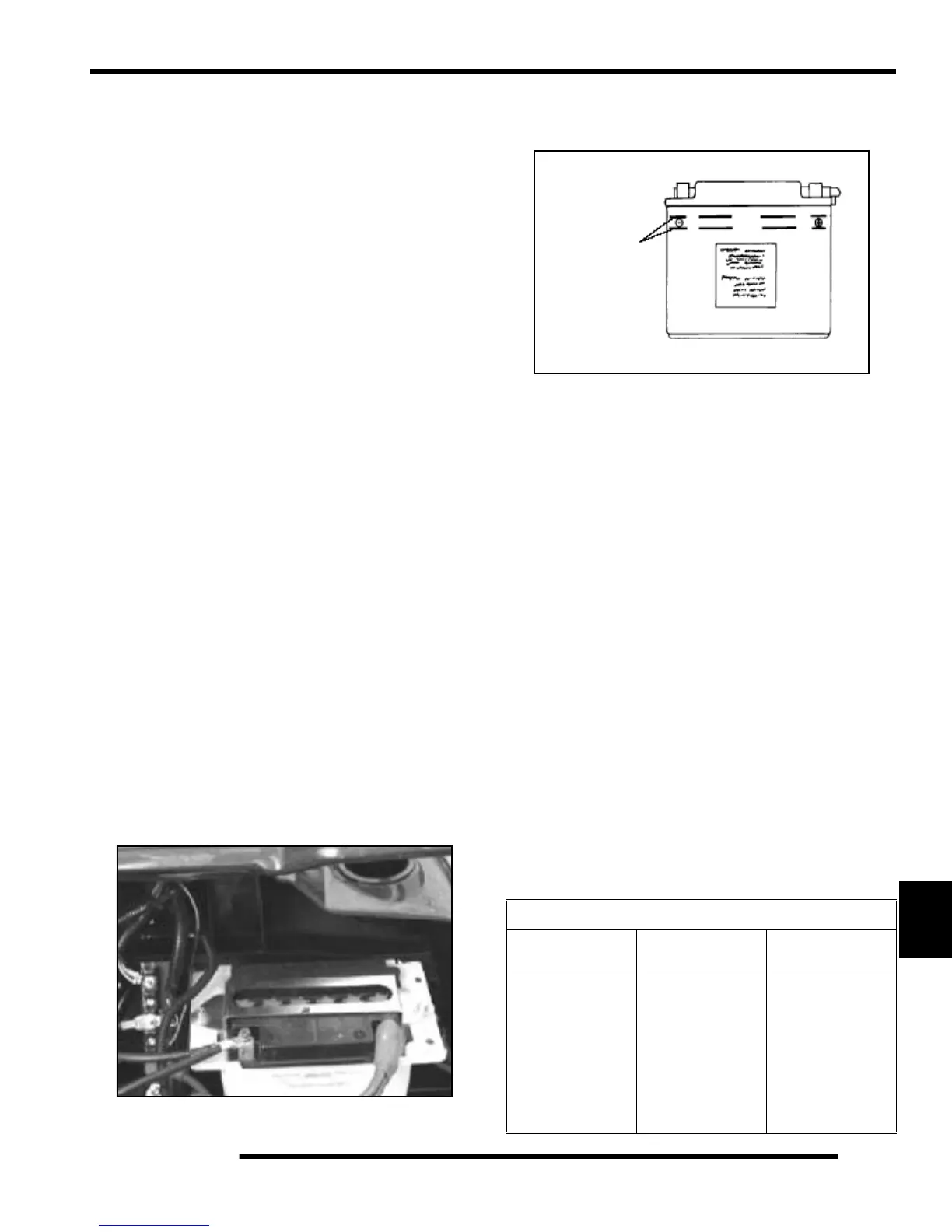10.27
ELECTRICAL
10
To ensure maximum service life and performance from a new
battery, perform the following steps. NOTE: Do not service the
battery unless it will be put into regular service within 30 days.
After initial service, add only distilled water to the battery.
Never add electrolyte after a battery has been in service.
NOTE: New Battery: Battery must be fully charged
before use or battery life will be significantly
reduced 10-30% of the battery’s full potential.
To activate a new battery:
1. Remove vent plug from vent fitting. Remove cell caps.
2. Fill battery with electrolyte to upper level marks on case.
3. Set battery aside to allow for acid absorption and
stabilization for 30 minutes.
4. Add electrolyte to bring level back to upper level mark on
case.
NOTE: This is the last time that electrolyte should
be added. If the level becomes low after this point,
add only distilled water.
5. Charge battery at 1/10 of its amp/hour rating. Examples: 1/
10 of 9 amp battery = .9 amp; 1/10 of 14 amp battery = 1.4
amp; 1/10 of 18 amp battery = 1.8 amp (recommended
charging rates).
6. Check specific gravity of each cell with a hydrometer to
assure each has a reading of 1.270 or higher.
Battery Inspection
IMPORTANT: Proper servicing and upkeep of the
battery is very important in maintaining long battery
life.
The battery is located under the hood.
Inspect the battery fluid level. When the battery fluid nears the
lower level, remove the battery and fill with distilled water only
to the upper level line. To remove the battery:
Battery Removal / Installation
See Chapter 2 “Maintenance” for battery service procedures.
Battery Testing
Whenever a service complaint is related to either the starting or
charging systems, the battery should be checked first.
Following are three tests which can easily be made on a battery
to determine its condition: OCV Test, Specific Gravity Test and
Load Test.
OCV - Open Circuit Voltage Test
Battery voltage should be checked with a digital multitester.
Readings of 12.6 volts or less require further battery testing and
charging. See the following chart and Load Test.
NOTE: Lead-acid batteries should be kept at or near
a full charge as possible. Electrolyte level should be
kept between the low and full marks. If the battery is
stored or used in a partially charged condition, or
with low electrolyte levels, hard crystal sulfation will
form on the plates, reducing the efficiency and
service life of the battery.
OPEN CIRCUIT VOLTAGE
State of Charge
Conventional
Lead-Acid
YuMicron™ Type
100% Charged 12.60 V 12.70 V
75% Charged 12.40 V 12.50 V
50% Charged 12.10 V 12.20 V
25% Charged 11.90 V 12.0 V
0% Charged
less than
11.80 V
less than
11.9 V
Maintain
between upper
and lower level
marks
